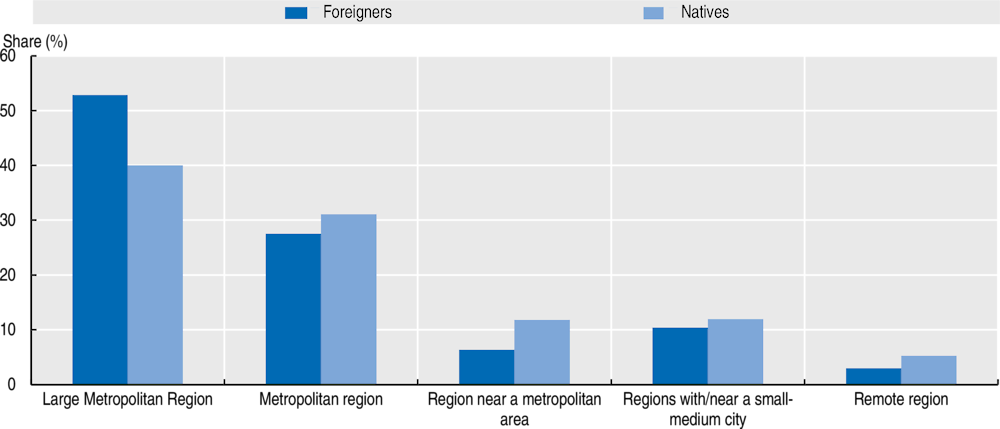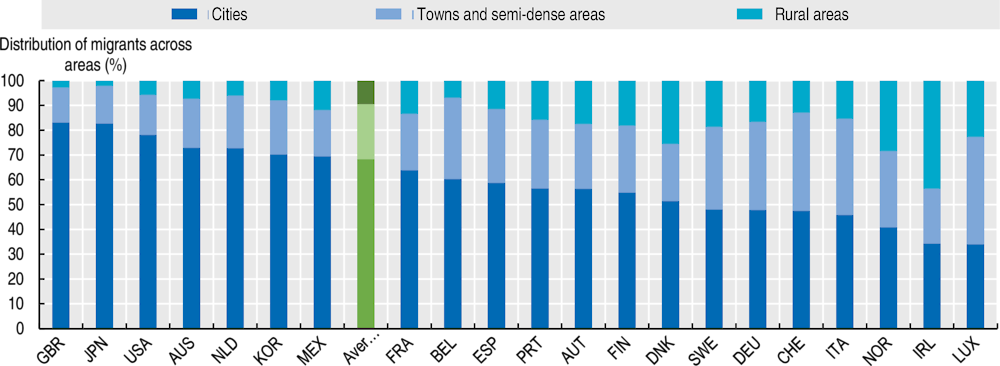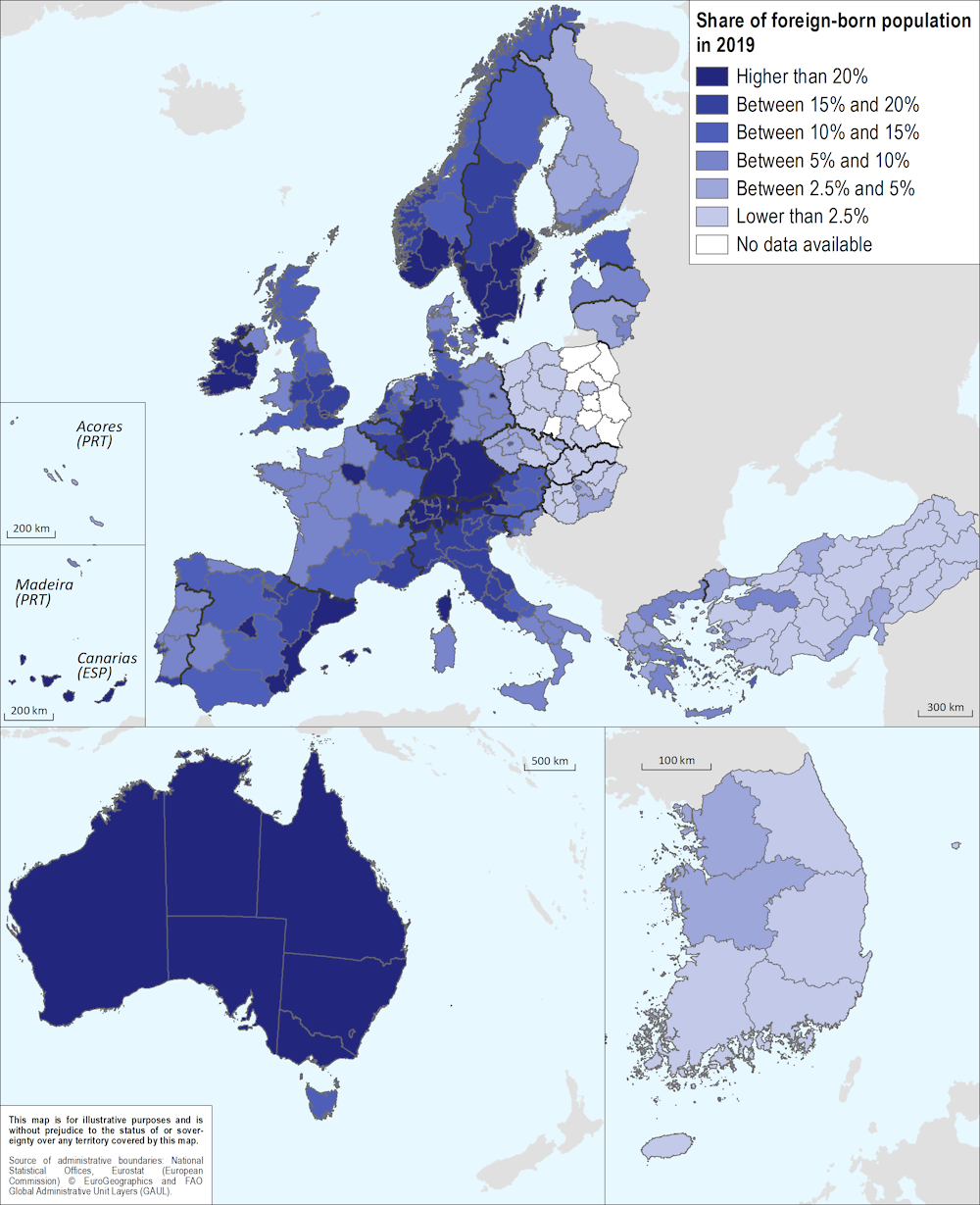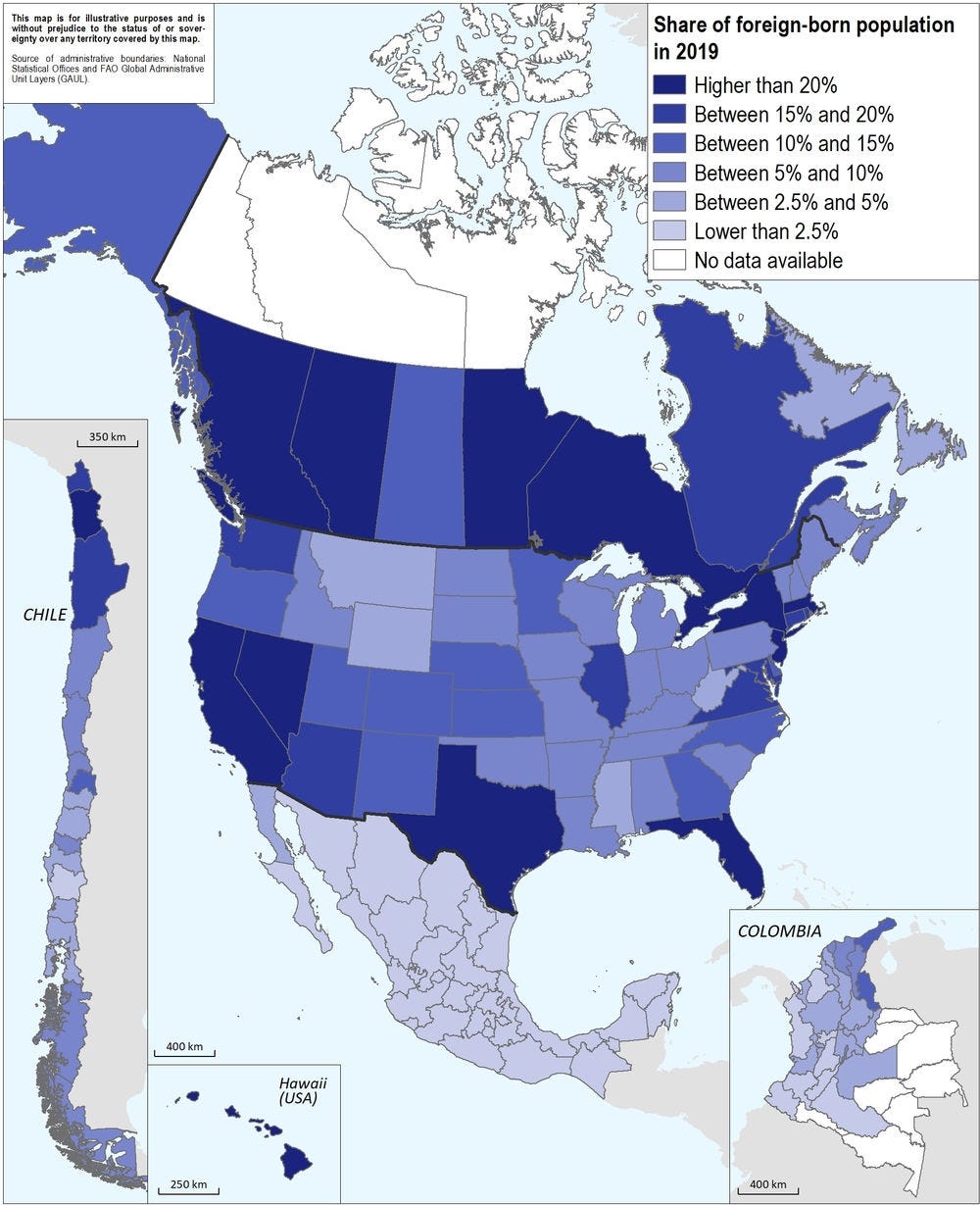Eight out of every ten migrants live in metropolitan regions in OECD countries, but only seven out of ten native-born.
In a context of widespread ageing and shrinking working-age population across OECD regions, international migration is one important source of potential inflows of people in regional economies. In 2019, 5.3 million new permanent migrants settled in OECD countries, an increase of around 25% since 2010. New migrants come with a variety of skills and socio-demographic characteristics and include for instance highly-qualified foreign doctors, nurses and scientists, as well as individuals working in low-skilled occupations. While regional data is not yet available for 2020, permanent migration inflows to OECD countries are estimated to have fallen by more than 30%, due in part to widespread restrictions on international travel and migration. This halted population growth in several OECD countries, including Australia and Germany (OECD, 2022a).
The share of migrants (foreign-born population) over the total population has a very diverse magnitude across OECD countries. For example, while 14% of the population in OECD were migrants in 2019, that share was 47% in Luxembourg and only 1% in Mexico (OECD, 2022b). The presence of migrants also differs within OECD countries. In some regions, migrants represent one-fourth of the population, while in others a negligible share. On average, the regional variation is stark, with a 15-percentage point difference between the region with the highest and lowest share of migrants within the same country (Figures 3.15 and 3.16). Belgium and the UK record the largest regional differences (above 35 percentage points) among OECD countries, while Denmark, Norway, Sweden and Switzerland display relatively small regional variations.
Compared to the native-born population, migrants are more likely to settle in large and dense regions, where they can benefit from agglomeration advantages including employment opportunities and social networks. Accordingly, more than half of the foreign-born population (53%) in the 22 OECD countries with available data live in large metropolitan regions, i.e. regions that contain a metropolitan area of more than 1.5 million inhabitants, 13 pp higher than for native-born population (Figure 3.13). In contrast, less than a fifth of migrants (19%) reside in non-metropolitan regions, compared to almost a third (30%) of the native‑born population. The difference in the location of migrants and native-born populations is particularly striking in remote regions and regions near a metropolitan area. Remote regions account for 5% of the native-born population while only 3% of migrants. Similarly, regions near small/medium-sized cities account for 12% of the native-born population, but only 6% of migrants (Astruc-Le Souder et al., forthcoming).
In most OECD countries, migrants continue concentrating in cities. On average, cities host 68% of the migrant population, while towns and semi-dense areas, and rural areas host 22% and 9% of migrants over the total population respectively (Figure 3.14). Since 2015, the share of migrants has increased in all types of areas, but more strongly in cities. Between 2015 and 2019, the share of migrants living in cities increased from 11% to 14%. During the same period, the share of migrants in towns and semi-dense areas, and rural areas increased by two and one pp respectively.




